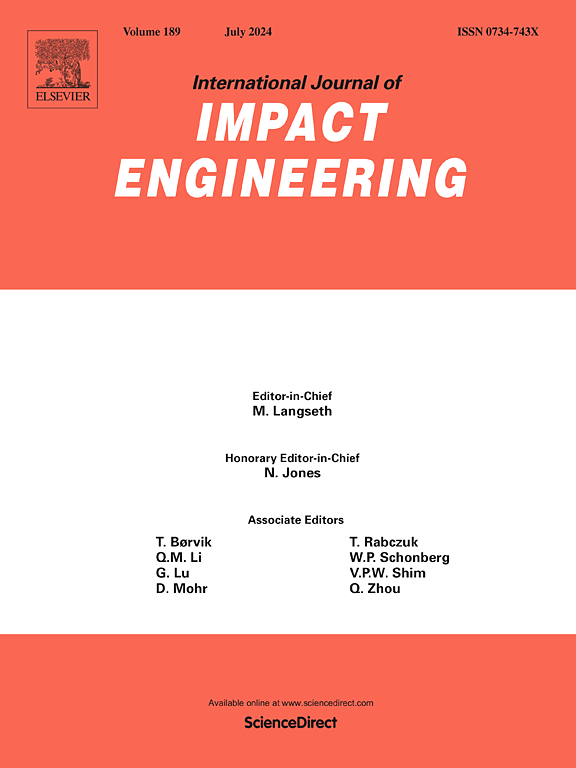A novel measurement method for specific impulse of underwater pressure pulse based on mass-spring
IF 5.1
2区 工程技术
Q1 ENGINEERING, MECHANICAL
International Journal of Impact Engineering
Pub Date : 2024-12-04
DOI:10.1016/j.ijimpeng.2024.105198
引用次数: 0
Abstract
Achieving the accurate evaluation of underwater explosion power is of great interest to the defense of warship. To address the limitations of traditional electrical sensors, a novel method for measuring the specific impulse of underwater pressure pulses using a mass-spring with constrained boundaries (MSCB) is proposed, wherein the specific impulse is estimated based on the mass of discharged water from MSCB. Experimental study using a modified split Hopkinson pressure bar (SHPB) is conducted to investigate the relationship between specific impulse and the mass of discharged water. Additionally, a verified finite element simulation is employed to predict the dynamic responses of MSCB considering the effects of pressure pulse properties and MSCB structural parameters. The findings reveal that, when subjected to pressure pulse loading, the mass block vibrates non-periodically within the constraint boundaries, with the water discharge mainly occurring during the first vibration cycle. The mass block tends to stay on the back constraint boundary as pressure amplitude and duration time increase. Furthermore, the mass of discharge water with respect to MSCB shows a linear correlation with the specific impulse of the pressure pulse, regardless of the rate at which pressure rise, demonstrating the feasibility of MSCB in measuring the specific impulse of underwater pressure pulse. An increase in either stiffness coefficient or weight of the mass block leads to a decrease in the sensitivity coefficient (ratio of discharge water mass to specific impulse) of MSCB. The proposed method for measuring specific impulse of underwater pressure pulses does not require a power supply and can serve as an important complement to electrical measurements, particularly for testing in extreme underwater explosion environments.
求助全文
约1分钟内获得全文
求助全文
来源期刊

International Journal of Impact Engineering
工程技术-工程:机械
CiteScore
8.70
自引率
13.70%
发文量
241
审稿时长
52 days
期刊介绍:
The International Journal of Impact Engineering, established in 1983 publishes original research findings related to the response of structures, components and materials subjected to impact, blast and high-rate loading. Areas relevant to the journal encompass the following general topics and those associated with them:
-Behaviour and failure of structures and materials under impact and blast loading
-Systems for protection and absorption of impact and blast loading
-Terminal ballistics
-Dynamic behaviour and failure of materials including plasticity and fracture
-Stress waves
-Structural crashworthiness
-High-rate mechanical and forming processes
-Impact, blast and high-rate loading/measurement techniques and their applications
 求助内容:
求助内容: 应助结果提醒方式:
应助结果提醒方式:


